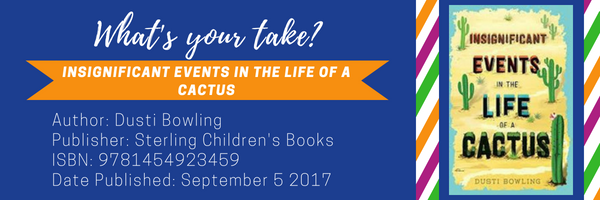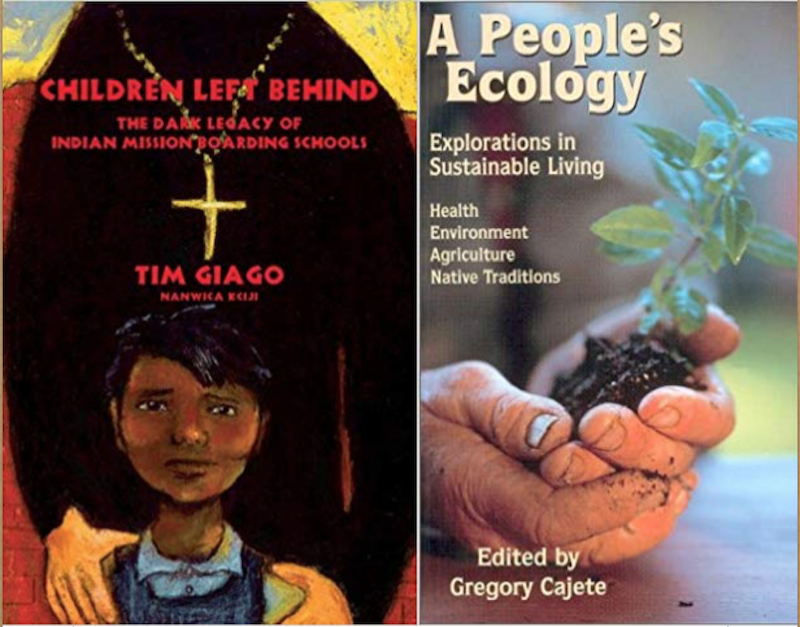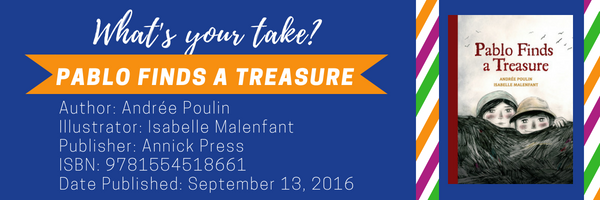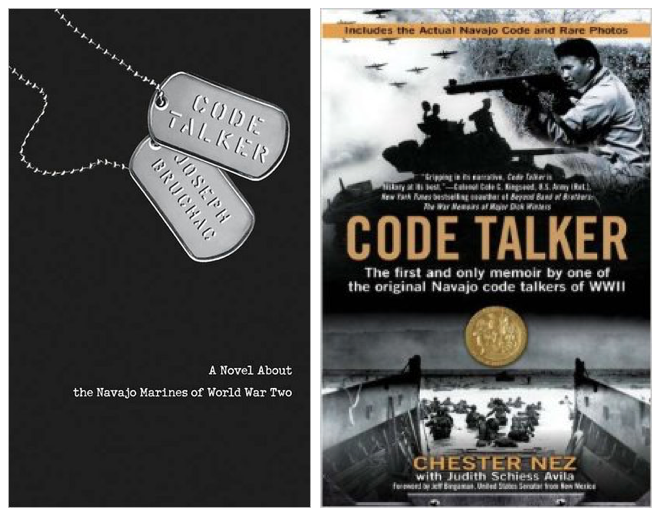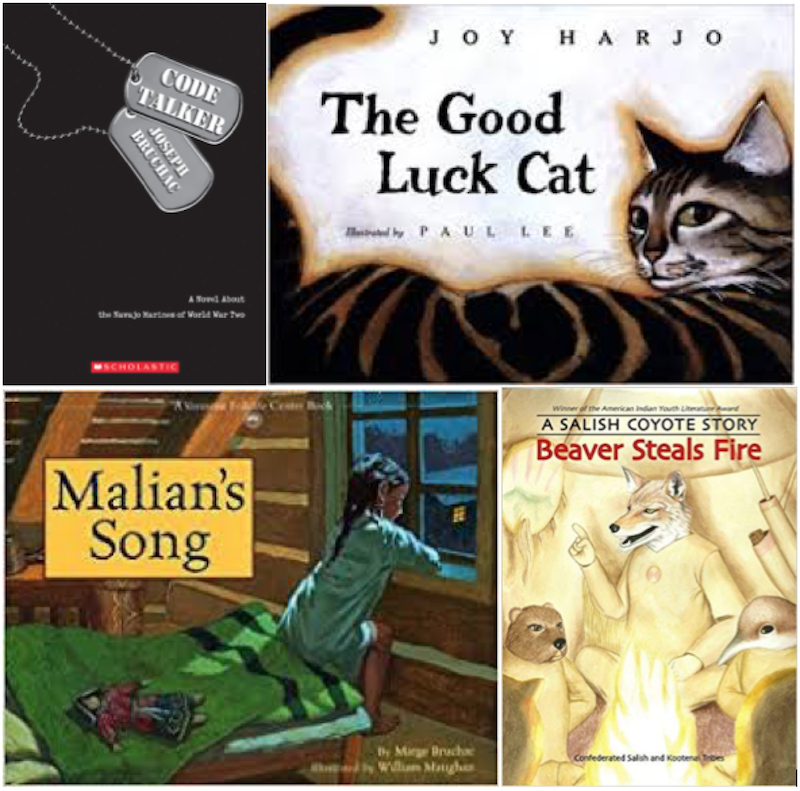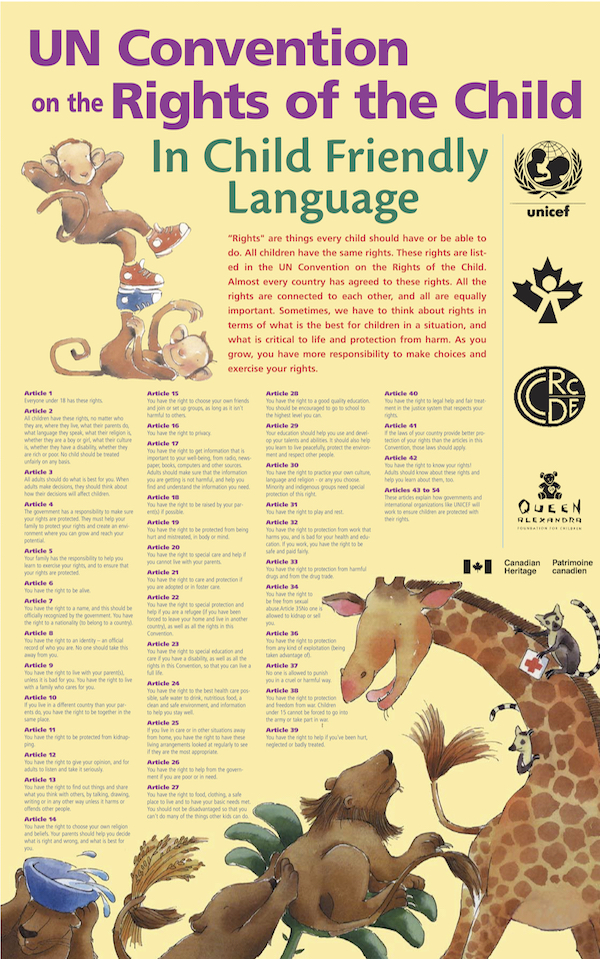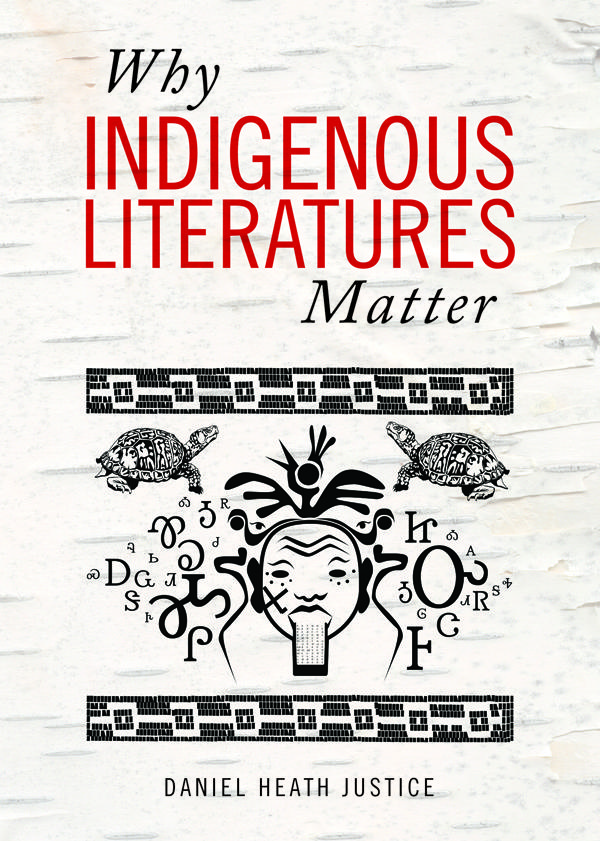This month we’re examining four books that focus on the theme Sense of Place. Having a sense of home or belonging is something humans value almost as much as family. The books selected for this month center around characters who find that special sense of place, or have to leave their longtime place and find a new one. This week’s selection is Insignificant Events In the Life of a Cactus.
Author: Rebecca Ballenger


Using Indigenous Literature to Heal from Historical Trauma
By Angeline P. Hoffman, White Mountain Apache
Dr. Gregory Cajete, the editor of A People’s Ecology: Explorations in Sustainable Living, puts together many voices to focus on health and healing in Indigenous cultures. This book provides a substantial contribution to our knowledge of many subjects, including foods, food traditions and farming among Indigenous peoples; health problems resulting from the adoption of a “modern” diet by Native communities; efforts to restore the self-reproducing food plants that are the foundation of sustainable agriculture; permaculture and environmental restoration; the folk healing system known as curanderismo; the renaissance of ancient building practices; and organic foods retailers as activists.

MTYT: Pablo Finds a Treasure
For My Take/Your Take this month, we examine four books that focus on the theme, Sense of Place. Last week, Michele and Yoo Kyung challenged the ways in which we think about place as home and instead consider how place is about where one discovers self. This week, they use the lens of sense of place to give their takes on Pablo Finds a Treasure by Andrée Poulin and Isabelle Malenfant.

Code Talker Stories
By Angeline P. Hoffman, White Mountain Apache
Code Talker stories are important because of the significant impact Code Talkers had on World War II. Additionally, the portrayals of the Code Talkers in story empower the reality of our Navajo Heroes. This section, I would like to honor them. During the course of World War II, Diné (Navajo) code talkers were a crucial part of the U.S. strength in the South Pacific, sending and receiving messages in an unbreakable code based on the Diné language. As Marines, they took part in every assault, from Guadalcanal in 1942 to Okinawa in 1945, experiencing some of the bloodiest fighting in the war. For the Diné code talkers, the military experience of serving in World War II–mythologized as “the good fight”–was a chance for the young men to demonstrate their courage in the most exciting adventure of their lives. Descriptions of the following books are copied from the publishers’ websites unless otherwise noted.

Stories of the American Indian Experience
By Angeline P. Hoffman, White Mountain Apache
The stories of Indigenous people reflect both the material and deeper aspects of our culture. These deeper aspects include traditions such as oral storytelling, considered a spiritual practice. Oral tradition is used to tell certain stories the way they should be told, with an impassioned audience and storyteller. These stories are defined as a body of literary works with standard procedures that have been preserved for many generations through performance. This structure helps listeners create awareness of their own cultural perspective. It’s important to understand the place of oral literature in Indigenous culture and to translate those stories into print so they can be shared. The weaving together of oral literacy with writing reveals unique features and values within many different cultures. This significance of the vocal and textual language is shown in several of this week’s suggested books that have been adapted from oral to print. Other books selected demonstrate culture, tradition, genocide, abuse and heroism, and help to honor the American Indian Experience.

WOW Recommends: Children of Blood and Bone
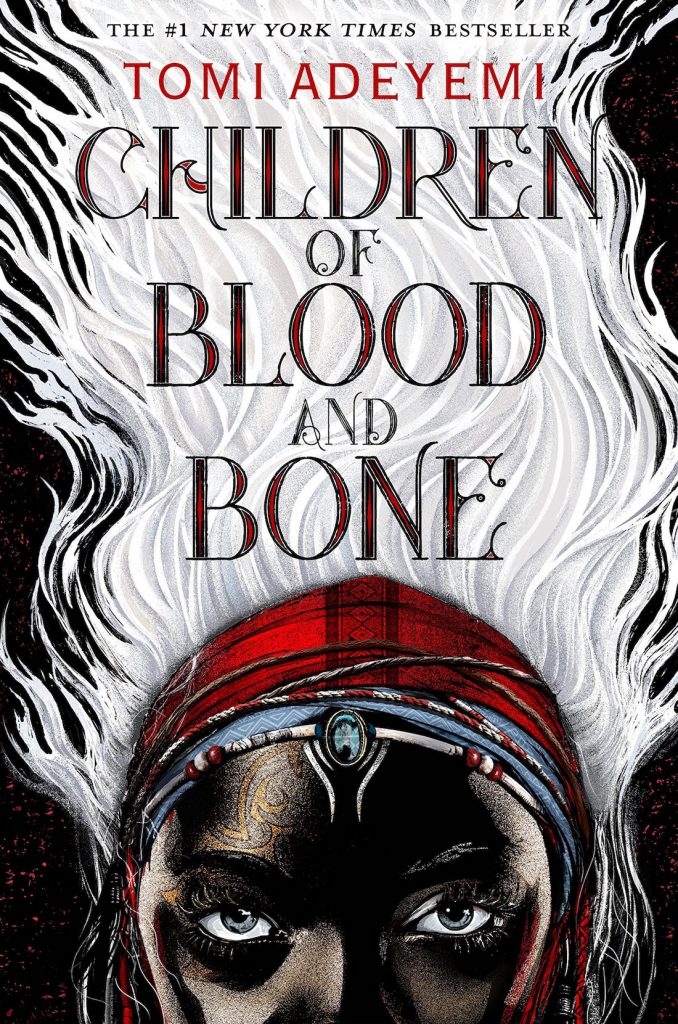 Let’s talk about Children of Blood and Bone by Tomi Adeyemi, a YA fantasy that opens with a lynching and ends with an author’s note urging readers to rise. In between is nothing but action, emotional turmoil and rarely a chance to breathe. Emphasizing this occurrence, Adeyemi repeatedly echoes Eric Garner’s words, “I can’t breathe.” Continue reading
Let’s talk about Children of Blood and Bone by Tomi Adeyemi, a YA fantasy that opens with a lynching and ends with an author’s note urging readers to rise. In between is nothing but action, emotional turmoil and rarely a chance to breathe. Emphasizing this occurrence, Adeyemi repeatedly echoes Eric Garner’s words, “I can’t breathe.” Continue reading

Peace Defined by Child Characters and the United Nations
Susan Corapi, Trinity International University, Deerfield, IL
I have just been listening (again) to Albinoni’s Adagio in G Minor, the piece that cellist Vedran Smailovic played in Sarajevo to protest the deaths of 22 innocent civilians. As I listen to the exquisite melodies, I think about peace and what that means to so many people around the world who are in areas of political strife. I also think about peace in the homes of the people I interact with, whose lives have been fractured by bullying behavior, divorce, abuse, other forms of violence, death and extreme poverty. We need peace in all areas of our lives.
Continue reading
WOW Recommends: Mommy’s Khimar
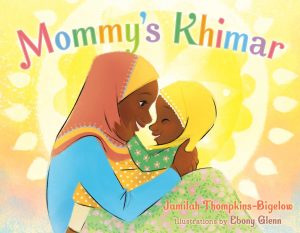 The sparkling picture book, Mommy’s Khimar by Jamilah Thompkins-Bigelow with illustrations by Ebony Glenn, is a delightful, warm story about an African-American, Muslim family. The girl who tells the story celebrates her love for her mother and the khimar that her mother wears. On the first page she tells us, “A khimar is a flowing scarf that my mommy wears. Before she walks out the door each day, she wraps one around her head.” The girl loves to play dress-up or pretend games wearing her mother’s yellow khimar. She becomes a queen with a golden train, a shooting star, a mama bird or a super hero in a cape, “dashing from room to room at the speed of light. Daddy snatches me up and I fly. Mommy can’t stop laughing when his bristly beard tickles my cheek with a kiss.” Sometimes Mom-Mom (her grandmother) visits after her Sunday service when the girl wears the khimar, Mom-Mom “sings out ‘Sweet Jesus’ and calls me Sunshine. Mom-Mom doesn’t wear a khimar. She doesn’t go to the mosque like Mommy and Daddy do. We are a family and we love each other just the same.” Continue reading
The sparkling picture book, Mommy’s Khimar by Jamilah Thompkins-Bigelow with illustrations by Ebony Glenn, is a delightful, warm story about an African-American, Muslim family. The girl who tells the story celebrates her love for her mother and the khimar that her mother wears. On the first page she tells us, “A khimar is a flowing scarf that my mommy wears. Before she walks out the door each day, she wraps one around her head.” The girl loves to play dress-up or pretend games wearing her mother’s yellow khimar. She becomes a queen with a golden train, a shooting star, a mama bird or a super hero in a cape, “dashing from room to room at the speed of light. Daddy snatches me up and I fly. Mommy can’t stop laughing when his bristly beard tickles my cheek with a kiss.” Sometimes Mom-Mom (her grandmother) visits after her Sunday service when the girl wears the khimar, Mom-Mom “sings out ‘Sweet Jesus’ and calls me Sunshine. Mom-Mom doesn’t wear a khimar. She doesn’t go to the mosque like Mommy and Daddy do. We are a family and we love each other just the same.” Continue reading

Uplifting Indigenous Literature
By Celeste Trimble, St. Martin’s University, Lacey, WA
Daniel Heath Justice’s new book Why Indigenous Literatures Matter is a marvelous look at the the critical issues within and surrounding Indigenous Literature in Canada and the United States. Justice, Colorado born Cherokee citizen, now also a Canadian citizen, holds the Canada Research Chair in Indigenous Literature and Expressive Culture at the University of British Columbia. The work is academic, but personal and poetic. It highlights contemporary Indigenous authors writing for adults and children and touches on fiction, poetry, personal essay, and memoir.

WOW Invites Applications for Teen Reading Ambassadors
By Zachary Steiner, Editorial Assistant for Worlds of Words
Worlds of Words seeks applications for the Teen Reading Ambassador initiative, a program in the University of Arizona College of Education offering a college experience with young adult literature to high school students. Ambassadors learn about young adult literature under the direction of faculty and staff with expertise in children’s literature, education, library science and marketing.
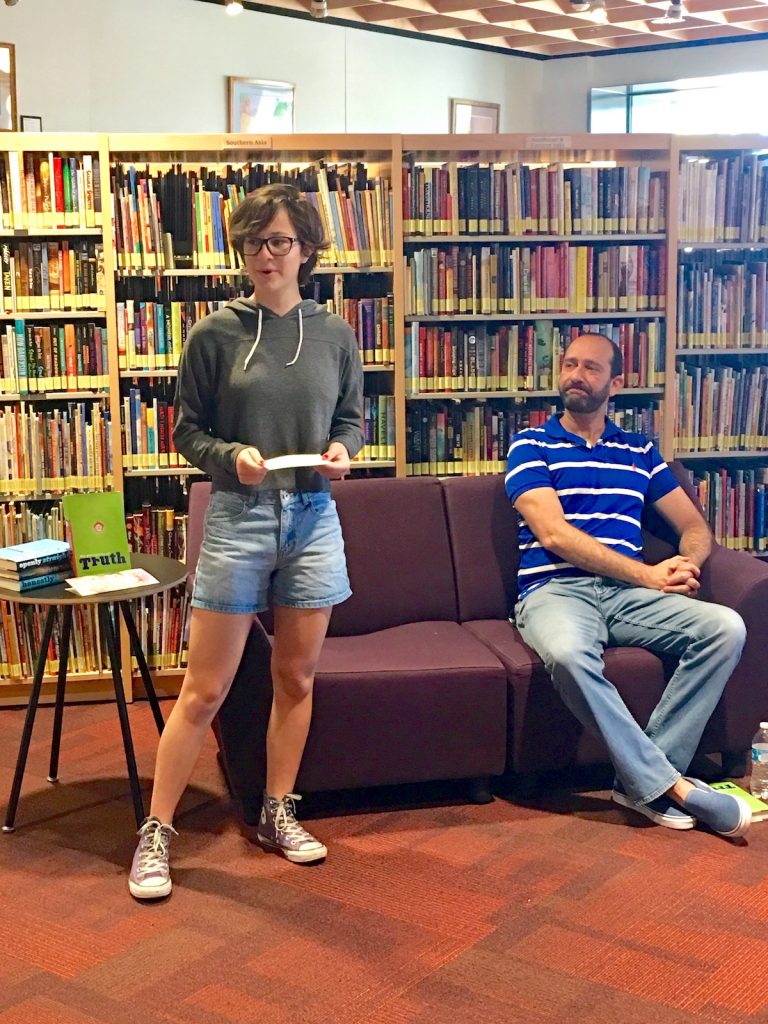
Teen Reading Ambassador George Ballenger introduces Bill Konigsberg, author of The Porcupine of Truth.

